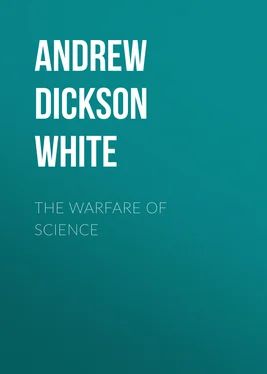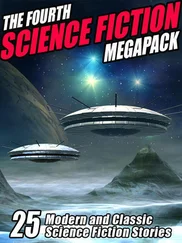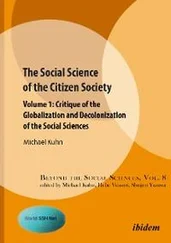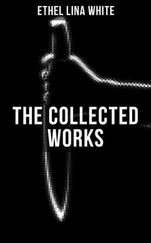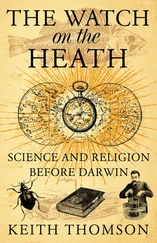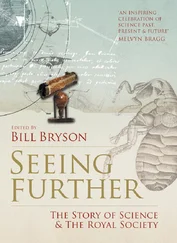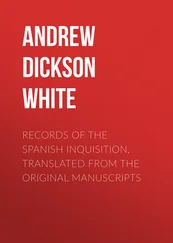Andrew Dickson White - The Warfare of Science
Здесь есть возможность читать онлайн «Andrew Dickson White - The Warfare of Science» — ознакомительный отрывок электронной книги совершенно бесплатно, а после прочтения отрывка купить полную версию. В некоторых случаях можно слушать аудио, скачать через торрент в формате fb2 и присутствует краткое содержание. Жанр: foreign_prose, foreign_religion, Философия, foreign_psychology, foreign_antique, на английском языке. Описание произведения, (предисловие) а так же отзывы посетителей доступны на портале библиотеки ЛибКат.
- Название:The Warfare of Science
- Автор:
- Жанр:
- Год:неизвестен
- ISBN:нет данных
- Рейтинг книги:5 / 5. Голосов: 1
-
Избранное:Добавить в избранное
- Отзывы:
-
Ваша оценка:
- 100
- 1
- 2
- 3
- 4
- 5
The Warfare of Science: краткое содержание, описание и аннотация
Предлагаем к чтению аннотацию, описание, краткое содержание или предисловие (зависит от того, что написал сам автор книги «The Warfare of Science»). Если вы не нашли необходимую информацию о книге — напишите в комментариях, мы постараемся отыскать её.
The Warfare of Science — читать онлайн ознакомительный отрывок
Ниже представлен текст книги, разбитый по страницам. Система сохранения места последней прочитанной страницы, позволяет с удобством читать онлайн бесплатно книгу «The Warfare of Science», без необходимости каждый раз заново искать на чём Вы остановились. Поставьте закладку, и сможете в любой момент перейти на страницу, на которой закончили чтение.
Интервал:
Закладка:
But, most important of all, it was stamped with the seal of St. Thomas Aquinas. The sainted theologian—the glory of the Mediæval Church, the "angelic doctor"—he to whom it was believed an image of the Crucified had spoken words praising his writings—had shown in his treatise on the Heaven and Earth, by philosophy, theology, and revelation, that the position of the earth must be in the centre. 20 20 See St. Thomas Aquinas , Liber de Cœlo et Mundo , sec. xx.
Still the germs of the heliocentric theory 21 21 For Germs of Heliocentric Theory planted long before , etc., see Sir G. C. Lewis ; also, Draper , Intellectual Development of Europe , p. 512; and for a succinct statement of the claims of Pythagoras, Philolaus, Aristarchus, and Martianus Capella, see Hœfer , Hist. de l'Astronomie , 1873, p. 107, et seq. For germs among thinkers of India, see Whewell , vol. i., p. 277. Also, Whitney , Oriental and Linguistic Studies , New York, 1874; Essay on the Lunar Zodiac , p. 345.
had been planted long before, and well planted; it had seemed ready even to bloom forth in the fifth century, from the mind of Martianus Capella, and in the fifteenth from the mind of Cardinal de Cusa; but it could not be forgotten that St. Thomas had elaborated the opposite view; the chill of dogmatism was still over the earth, and up to the beginning of the sixteenth century there had come to this great truth neither bloom nor fruitage. 22 22 For general statement of De Cusa's work, see Draper , Intellectual Development of Europe , p. 512. For skillful use of De Cusa's view in order to mitigate censure upon the Church for its treatment of Copernicus's discovery, see an article in the Catholic World for January, 1869. For a very exact statement, in a spirit of judicial fairness, see Whewell , History of the Inductive Sciences , p. 275 and pp. 379, 380. In the latter, Whewell cites the exact words of De Cusa in the De Docta Ignorantia , and sums up in these words: "This train of thought might be a preparation for the reception of the Copernican system; but it is very different from the doctrine that the sun is the centre of the planetary system." In the previous passage, Whewell says that De Cusa "propounded the doctrine of the motion of the earth, more, however, as a paradox than as a reality. We cannot consider this as any distinct anticipation of a profound and consistent view of the truth." For Aristotle's views and their elaboration by St. Thomas Aquinas, see the treatise De Cœlo et Mundo . It is curious to see how even such a biographer of St. Thomas as Archbishop Vaughan slurs over the angelic doctor's errors. See Vaughan's Life and Labors of St. Thomas of Aquin , pp. 459, 460.
Quietly, however, the soil was receiving enrichment, and the air warmth. The processes of mathematics were constantly improved, the heavenly bodies were steadily though silently observed; and at length appeared, afar off from the centres of thought, on the borders of Poland, a plain, simple-minded scholar, who first fairly uttered to the world the truth, now so commonplace, then so astounding, that the sun and planets do not revolve about the earth, but that the earth and planets revolve about the sun, and that man was Nicholas Kopernik. 23 23 For improvement of mathematical processes, see Draper , Intellectual Development of Europe , 513. In looking at this and other admirable summaries, one feels that Prof. Tyndall was not altogether right in lamenting, in his farewell address at New York, that Dr. Draper has devoted so much of his time to historical studies.
Kopernik had been a professor at Rome, but, as this truth grew within him, he seemed to feel that at Rome he was no longer safe. 24 24 Kopernik's danger at Rome. The Catholic World for January, 1869, cites a recent speech of the Archbishop of Mechlin before the University of Louvain, to the effect that Copernicus defended his theory, at Rome, in 1500, before two thousand scholars; also, that another professor taught the system in 1528, and was made Apostolic Notary by Clement VIII. All this, even if the doctrines taught were identical with those of Copernicus, as finally developed, which idea Whewell seems utterly to disprove, avails nothing against the overwhelming testimony that Copernicus felt himself in danger—testimony which the after-history of the Copernican theory renders invincible. The very title of Fromundus's book, already cited, published within a few miles of the archbishop's own cathedral, and sanctioned expressly by the theological Faculty of that same University of Louvain in 1630, utterly refutes the archbishop's idea that the Church was inclined to treat Copernicus kindly. The title is as follows: "Anti-Aristarchus | Sive | Orbis-Terræ | Immobilis | In quo decretum S. Congregationis S. R. E. | Cardinalium | IƆC. XVI adversus Pytha | gorico-Copernicanos editum defenditur | Antwerpiæ MDCXXXI." L'Epinois , Galilée , Paris, 1867, lays stress, p. 14, on the broaching of the doctrine by De Cusa, in 1435, and by Widmanstadt, in 1533, and their kind treatment by Eugenius IV. and Clement VII., but this is absolutely worthless in denying the papal policy afterward. Lange , Geschichte des Materialismus , vol. i., pp. 217, 218, while admitting that De Cusa and Widmanstadt sustained this idea and received honors from their respective popes, shows that, when the Church gave it serious consideration, it was condemned. There is nothing in this view unreasonable. It would be a parallel case to that of Leo X., at first inclined toward Luther and the others, in their "squabbles with the begging friars," and afterward forced to oppose them. That Copernicus felt the danger, is evident, among other things, by the expression in the preface, " Statim me explodendum cum tali opinione clamitant ."
To publish this thought was dangerous indeed, and for more than thirty years it lay slumbering in the minds of Kopernik and the friends to whom he had privately intrusted it.
At last he prepares his great work on the Revolution of the Heavenly Bodies , and dedicates it to the pope himself. He next seeks a place of publication. He dares not send it to Rome, for there are the rulers of the older Church ready to seize it. He dares not send it to Wittenberg, for there are the leaders of Protestantism no less hostile. It is therefore intrusted to Osiander, of Nuremberg. 25 25 For dangers at Wittenberg, see Lange , Geschichte des Materialismus , vol. i., p. 217.
But, at the last moment, Osiander's courage fails him. He dares not launch the new thought boldly. He writes a groveling preface; endeavors to excuse Kopernik for his novel idea. He inserts the apologetic lie that Kopernik propounds the doctrine of the movement of the earth, not as a fact , but as an hypothesis ; he declares that it is lawful for an astronomer to indulge his imagination , and that this is what Kopernik has done.
Thus was the greatest and most ennobling, perhaps, of scientific truths—a truth not less ennobling to religion than to science—forced, in coming into the world, to sneak and crawl. 26 26 Osiander, in a letter to Copernicus, dated April 20, 1541, had endeavored to reconcile him to such a procedure, and ends by saying, "Sic enim placidiores reddideris peripatheticos et theologos quos contradicturos metuis." See Apologia Tychonis in Kepleri Opera Omnia , Frisch's edition, vol. i., p. 246. Kepler holds Osiander entirely responsible for this preface. Bertrand, in his Fondateurs de l'Astronomie Moderne , gives its text, and thinks it possible that Copernicus may have yielded "in pure condescension toward his disciple." But this idea is utterly at variance with expressions in Copernicus's own dedicatory letter to the pope, which follows the preface. For a good summary of the argument, see Figuier , Savants de la Renaissance , pp. 378, 379. See, also, citation from Gassendi's life of Copernicus, in Flammarion , Vie de Copernic , p. 124. Mr. John Fiske, accurate as he usually is, in his recent Outlines of Cosmic Philosophy , appears to have followed Laplace, Delambre, and Petit into the error of supposing that Copernicus, and not Osiander, is responsible for the preface.
Интервал:
Закладка:
Похожие книги на «The Warfare of Science»
Представляем Вашему вниманию похожие книги на «The Warfare of Science» списком для выбора. Мы отобрали схожую по названию и смыслу литературу в надежде предоставить читателям больше вариантов отыскать новые, интересные, ещё непрочитанные произведения.
Обсуждение, отзывы о книге «The Warfare of Science» и просто собственные мнения читателей. Оставьте ваши комментарии, напишите, что Вы думаете о произведении, его смысле или главных героях. Укажите что конкретно понравилось, а что нет, и почему Вы так считаете.
